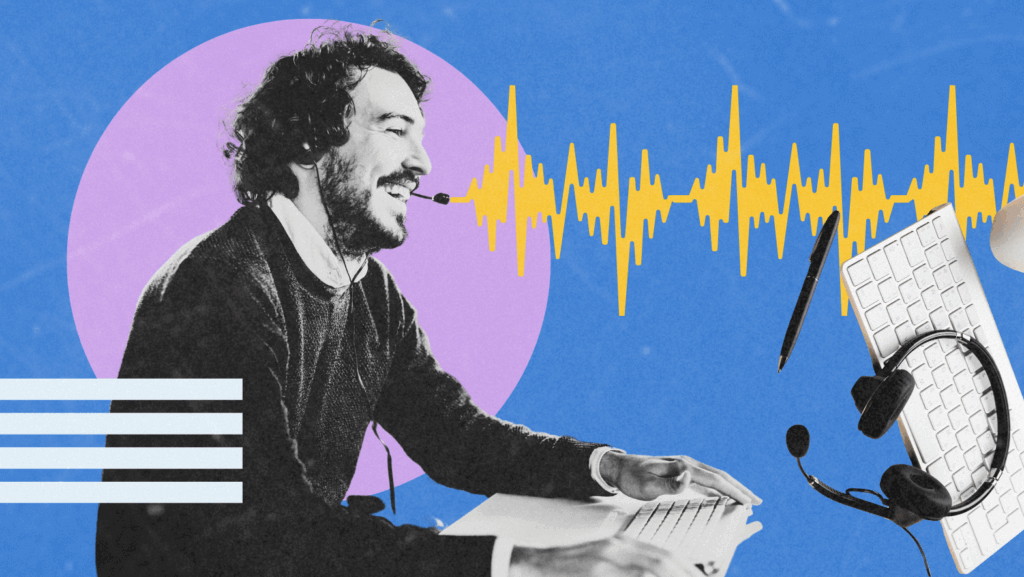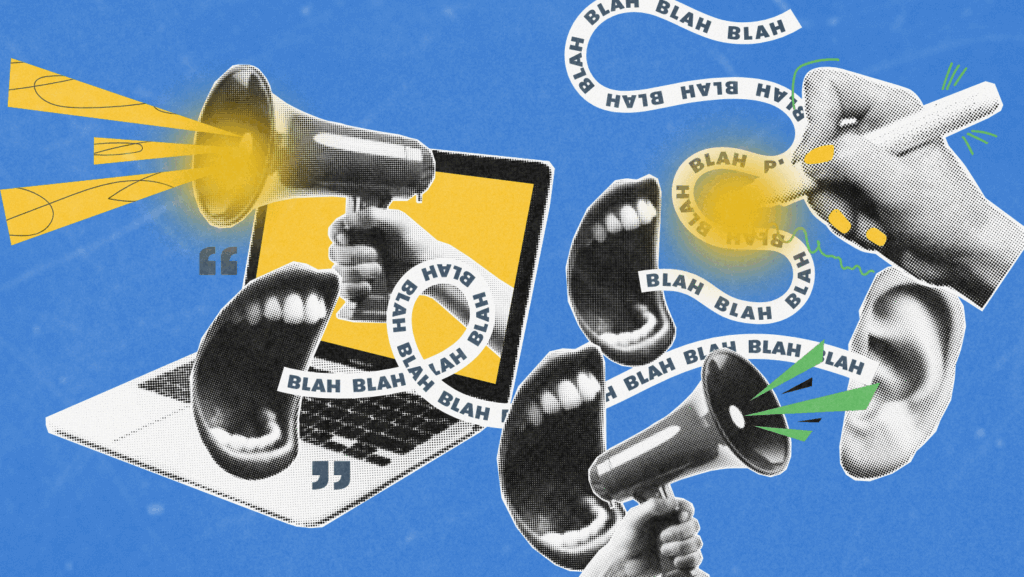You know how social media keeps growing in digital marketing? Even with that, landing pages and websites are still your core tools for building an online presence. If you understand the difference between them, it’s way easier to decide how to connect with your audience the right way.
Your website is basically your central hub. It’s where people go to get the full picture—across multiple pages—with things like service descriptions, blog posts, contact details, and product pages. A landing page? That’s a single web page built around one clear goal. It might be capturing leads, promoting a specific marketing campaign, or supporting targeted marketing campaigns.
They serve totally different purposes. Your full business website helps educate potential customers and lets most visitors explore other pages and learn more about your company’s offerings. A landing page is more focused—it’s all about encouraging visitors to take one action. And yeah, landing page design plays a big role in whether or not that happens.
Let’s break down the key differences so you can determine which one best suits your goals and how to get the most out of both.
What Is a Website and a Landing Page?
It’s easy to think a landing page and a website are the same thing—but they’re actually built for very different purposes. A website usually includes multiple pages, all connected by navigation menus, and it’s meant to offer a wide range of information. One landing page, on the other hand, is a single web page with one specific goal—usually to get someone to take action.
Once you’re clear on that landing page vs website difference, it becomes a lot easier to use both in the right way for your online marketing strategy. If you’re putting together either format, it really helps to understand keyword placement to boost search engine rankings. That kind of detail makes a difference in how well your content performs.
What Is a Website?

A website is basically a group of related web pages—usually starting with a main page and branching out to other pages under the same domain. Think of it as your company’s digital storefront. It’s the entire site where people can learn about your brand, browse products, and explore everything you have to offer. For a lot of businesses, this setup also doubles as their eCommerce platform and is a key part of their website development strategy.
Most websites include a few essentials: a home page, product pages, service descriptions, a contact page with contact details, and social media links. All of these pages are tied together with clear navigation menus, making it easy for visitors to explore the brand, read a blog post, or even complete a purchase through an online store.
Websites work best when you’re aiming to:
- Reach a wider audience
- Share relevant content
- Create an interactive, visually appealing experience
- Drive traffic through search engines and show up in search results
When everything’s organized and well-structured, a website can guide users through different site sections, help most visitors find what they’re looking for, and gradually improve visibility with keyword-rich content types.
What Is a Landing Page?

A landing page is a single web page built to convert visitors into leads or customers. It’s ideal for targeted marketing campaigns and specific marketing campaigns like promoting an eBook, webinar, or limited-time offer.
Unlike a full website, a landing page focuses on one goal, often achieved through clear, persuasive copy, a strong CTA, and a simple form. This streamlined landing page design removes distractions and boosts conversion rates. You can explore more on how to create a landing page that converts to better understand how design and messaging influence performance.
A well-branded, visually appealing, and dedicated landing page helps establish trust and attract specific audience groups. You can use customized landing pages with tailored messaging to match your target audience and campaign goals. When comparing landing pages/websites side by side, it’s helpful to consider how SEO content boosts rankings and how the right structure supports both visibility and conversions.
Landing pages work best for:
- Pay-per-click ads that drive traffic to one focused page
- Promoting lead magnets to generate leads
- Supporting specific campaigns with one clear message
- Reaching distinct target audiences with customized content
While landing pages differ from full business websites, they’re essential for generating leads and improving digital marketing results. To further refine your lead generation tactics, consider these ways to generate leads for your business.
Landing Pages vs Websites: Key Differences

A website is like a digital storefront—it’s a full hub where people can learn about your brand, explore product pages, and interact with your content. It serves a broader audience and offers details across several pages. To ensure users can easily find what they need, strong website navigation and structure are essential.
A landing page, on the other hand, is a specific page built to capture leads or drive one action, like a sign-up or purchase. It’s focused on a single message with a strong headline, clear copy, and a form—perfect for generating leads through marketing campaigns. To reinforce that message, it helps to follow clear call-to-action examples that match the campaign’s intent.
In short:
- A website informs and engages
- A landing page converts and drives action
Here are a few high-level key differences in the landing page vs website comparison:

Websites Share the Corporate Story
Most businesses need a full website to build credibility and share their story. A single landing page vs an entire website won’t provide the depth needed for a long-term online presence.
Potential customers, partners, and leads expect to see company websites with a main page, shop pages, and other key sections that signal professionalism. A strong layout, including thoughtful footer design, also reinforces trust and navigation across the entire site.
Websites also let companies include FAQs and comprehensive information, saving time by answering common questions up front. With several pages, a website gives visitors a complete view of the company’s offerings—something landing pages alone can’t deliver. To support this, implementing SEO silos can help organize content for both users and search engines more effectively.
Websites Track Behavior to Improve Conversion Rates
Companies can also use websites to their advantage by tracking user behavior. Web analytics helps designers understand how most visitors interact with different pages, which links they click, what visuals catch their attention, and which content keeps them engaged.
By tracking behavior across the entire site, businesses can refine layouts to highlight what matters most. For example, if product listings or pricing get the most views, placing that info front and center can boost conversion rates. To further enhance both user experience and visibility, it’s important to optimize the website’s title and tags, as these elements often influence what users see in search results before they even click.
Landing Pages Drive Action by Converting Visitors
A key difference in the landing page vs website comparison is the focus on immediate action. A landing page targets users with a specific offer, removing distractions to drive one clear result.
Effective landing page design is all about balance—too short and visitors may feel unsure; too long and the message gets lost. The best landing pages use strong CTAs to convert visitors, whether that’s a sign-up, form submission, or purchase. If you’re looking to improve this balance, reviewing landing page SEO tips can help ensure that both structure and search visibility are working together.
These single pages are designed to capture leads or trigger quick actions, often supported by social proof like reviews or trust badges. Incorporating call-to-action examples into your layout can also strengthen engagement and drive conversions.
How Many Landing Pages Improve Conversion?
According to HubSpot’s Marketing Benchmarks from 7,000 Businesses report, companies with 10–15 landing pages saw a 55% increase in leads, with even greater results for those using over 40.
Why? Having multiple landing pages lets you target more offers, products, and audience segments. You can build different landing pages for each focused campaign, making it easier to attract potential customers searching for precise solutions. To support this strategy, consider how the types of keywords in SEO can guide your targeting across different audience segments.
To boost conversions, each landing page should include a clear call to action, such as “Download a Free Guide” or “Sign Up for a Webinar.” Strong CTAs backed by clean layout and messaging can improve results significantly, especially when aligned with small business SEO best practices.
Meanwhile, your main website can house several pages with broader content, such as an About Us or Contact page with your contact information, offering a full view of your brand. You can enhance site-wide SEO and structure by analyzing and fixing issues through a regular website audit process.
More focused, campaign-specific pages often mean better relevance and can even help your site perform better in search results. With higher search rankings, more visitors are likely to see your site.
6 Best Practices to Create Landing Pages
Without the right elements, landing pages won’t convert potential customers effectively. Use these six best practices to create landing pages that drive higher conversion rates:
- Benefit-Focused Headline – Highlight your main offer or value clearly.
- Descriptive Subheadline – Support the headline with a short, value-driven detail.
- Relevant Images – Use visuals that enhance your message and make the page more visually appealing.
- Concise Description – Explain your offer with brief text or bullet points.
- CTA Form or Button – Include a strong, visible CTA to convert curious visitors into leads.
- Proof Elements – Add testimonials, logos, or stats to build trust through social proof.
What Is a Landing Page in Digital Campaigns?
Landing pages are easier to maintain than full websites because they serve just one purpose. While a website may include blog posts, news sites, or other content that encourages visitors to explore various pages, a landing page offers a dedicated space for one offer and one goal.
Visitors usually arrive from an ad, email, or social post, view the focused message, and either take action or leave. Without navigation menus or distractions, this setup increases the chance of conversion. To boost that conversion potential, it helps to build pages that follow proven landing page optimization techniques and align with the content production process your team already uses.
In short, the landing page experience is streamlined, with one page, one message, and one outcome, perfect for targeting your preferred audience and encouraging visitors to act quickly on a specific campaign.
Landing Pages are Lead Generation Machines

Not every visitor buys right away, most need several touchpoints. That’s why landing pages are great for getting users to take action and starting the lead-nurturing process.
With a clear offer, visitors are often willing to fill out a simple form for something valuable, like a free sample or resource.
This lets your landing page capture leads effectively, even if it doesn’t result in an immediate sale. Aligning your offer with a content marketing strategy helps ensure you’re delivering value from the start.
Smart businesses collect those emails and use ongoing promotional activities, like retargeting ads or follow-up emails, to re-engage potential customers.
As people see your offer multiple times, they become more likely to convert. To refine this process, you can audit your current funnel and explore ways to improve content and lead flow by avoiding overlap and confusion.
In short, a strong landing page is the first step to converting visitors into leads—and eventually into customers.
Landing Pages are Affordable and Easily Adapted

A major advantage of landing pages is that they’re fast, affordable, and easy to build, especially compared to full websites. Many online tools offer templates and a drag-and-drop editor, so you can launch a single landing page in hours without needing a full dev team.
Businesses often create multiple landing pages as part of their digital marketing and marketing efforts, tailoring each one to a different audience segment or budget.
It’s common to A/B test variations—headlines, images, CTAs, to find what resonates most with potential customers. One effective way to structure this strategy is by using content promotion techniques that direct the right traffic to each variation.
Since landing pages are easily adapted, you can refine them over time to boost conversion rates. This flexibility makes them ideal for specific campaigns where quick testing and targeted messaging are key.
To stay consistent across campaigns, using a streamlined content calendar process can help organize timing and updates for each landing page.
How to Create a Winning Landing Page Design
Creating a landing page that truly delivers results isn’t about flashy visuals or packing in as much content as possible—it’s about clarity, focus, and function. Every element on the page should guide your visitor toward one clear action, whether it’s signing up, buying, or booking.
Start with a Clear Goal:

Before diving into visuals or copy, define the single objective of your landing page. Is it to capture email leads? Promote a new service? Clarity in purpose shapes everything else.
Craft a Compelling Headline:
The headline is often your first (and only) chance to grab attention. Keep it short, benefit-driven, and aligned with your ad or search engine link. It should tell users exactly what they’ll get and why it matters to them.
Use a Clean, Mobile-Friendly Layout:

Your design should be simple and responsive. Avoid clutter. Use whitespace to your advantage, highlight the CTA (call to action), and ensure your layout adapts smoothly to mobile devices.
Include Trust Elements:
Incorporate reviews, testimonials, security badges, or partner logos. These subtle signals build credibility and reduce hesitation, especially for first-time visitors.
Make the CTA Stand Out:

Whether it’s a button or a form, your CTA should be impossible to miss. Use contrasting colors, actionable language (e.g., “Get Started,” “Claim Your Spot”), and repeat the CTA in key sections of the page.
Test and Tweak Continuously:
A winning landing page is rarely built in one go. Use A/B testing tools to compare headlines, images, button placements, and other components. Monitor heatmaps and analytics to learn where users click or drop off.
For additional performance gains, consider using native advertising to drive highly targeted traffic to your page.
A strategic design combined with clear intent and user-first thinking transforms a good landing page into a high-converting one.
Websites Have Larger Product Selection

A key difference in the landing page vs website comparison is scope. A website can showcase many products or services across various pages, while a landing page focuses on a single product or offer to guide visitors toward one action, like a sign-up or purchase.
Your website acts as an online catalog, letting visitors explore product pages, discover new items, or view promotions they didn’t initially come for.
A standalone landing page, however, stays focused on one message, making it ideal for targeted campaigns. Implementing a clear keyword mapping strategy ensures each page speaks directly to what your audience is searching for.
Websites help deepen customer relationships by encouraging visitors to explore more, which often leads to cross-selling, while landing pages excel at driving one specific conversion. When paired with content syndication, these efforts can also extend your reach and amplify campaign results beyond your own domain.
How does a web page help a business?

They can help a company by showing off products and services, contact information, and location. For example, a homepage links your visitors to other pages on your website, which can be pretty important to guide your visitors to your products and services.
What are some benefits of web design? Web designers have many tools to create interactive websites with features such as videos.
Web designers must know what they want before beginning. This entails deciding on objectives for website visitors, SEO strategy, and content for social channels, and planning how often it will be updated.
Websites should also account for mobile devices so that people browsing from smartphones or tablets have the same experience. For example, no one wants to click on half of a homepage.
An important part of the decision about landing page vs. website is choosing the hosting platform that best suits your needs.
How to make sure your site is successful?
Web pages, as part of a full website, help businesses showcase products, share information, and build trust. A home page typically links to other site sections, guiding visitors to valuable content like services or products, helping them explore your entire website with ease.
Company websites also offer creative flexibility. Web designers can use features like sliders, videos, and logins to build visually appealing, interactive experiences. Each page should have a clear purpose, support your SEO strategy for better search results, and connect with channels like email and social media links.
Optimizing for mobile is also important, ensuring the site works smoothly on phones and tablets. Practical steps like choosing fast hosting, reducing load times, and planning a clean layout all contribute to a successful site that supports your brand.
Content Delivery and Audience Targeting

Both websites and landing pages deliver content, providing value to your brand. However, what content and how much of it is a crucial difference between the two.
Content on a landing web page needs to be short and to the point. Companies are increasingly using short video clips to explain or highlight a product, and they’ll include before-and-after pictures or the results of a service they provide.
Websites have virtually no limit on the amount of content they can host or generate. Most businesses house a blog or web seminars on their website, and they post newsletters to keep audiences engaged. A visitor has easy access to the content through helpful homepage links.
They work together to boost visitor traffic and close sales. Websites advertise services and tell a story. They work best when they drive traffic and increase brand visibility.
Understanding the distinctions and how to use each one is a hallmark of every successful business.
Landing Page Tools for High-Converting Landing Pages
Optimizing your landing pages is key to boosting conversion rates. Here are a few proven tools and techniques:
- A/B Testing – Compare two versions of a single landing page by testing one element at a time (like headlines or CTAs) to see what drives better results.
- Heatmaps & Scroll Maps – Visual tools that show where users click and how far they scroll, helping you identify which areas grab attention—and which are ignored.

- Split URL Testing – Test two entirely different landing page designs by directing equal traffic to each and comparing performance.
- Landing Page Analytics/Optimizers – Use insights from landing page builder platforms to refine layout, content, and form fields for better results.
Landing pages offer a flexible way to capturing interest and meet campaign goals, but only with ongoing testing and improvement.
Why choose landing pages websites?
You might ask when to use a landing page or a full website. It depends on your goals.
A landing page is best for specific marketing campaigns, such as promoting a product, collecting RSVPs, or running ads on Google or Facebook. It’s designed for targeted marketing campaigns with a clear goal, such as sign-ups or downloads, and is ideal for prompting engagement fast through a focused form.
Many businesses choose a landing page over editing their full website because it’s quicker to build and better for testing interest in a specific offer.
But when your goal is to grow long-term traffic through search engines or provide detailed brand content, a full business website is essential. With multiple pages, SEO structure, and rich content, a website supports visibility and credibility over time for search engines.
In most cases, the best strategy is to use both:
- The website provides overall brand info, like contact details, history, and blog posts.
- Landing pages focus on converting traffic from specific campaigns, like a free trial or seasonal offer.
This combined approach helps businesses engage a wider audience while still capturing target audience actions.
Final Thoughts
If you work in digital marketing, have a product or service to offer, or are trying to promote your mission, a website can be an invaluable tool.
It serves as your online headquarters and eCommerce site. On the other hand, a landing page helps drive a specific message home by using simple language and design that directs attention toward one goal.
It’s important for marketers who want people to take action on their site-based content to use their website and high-converting landing pages together when communicating a campaign message.
Ultimately, both a multi-page website and a single-page landing page have important roles in your marketing plan. Understanding when to use each is key to effective audience targeting and improving conversion rates. Knowing the difference between the two will bring your brand success in the long run.









